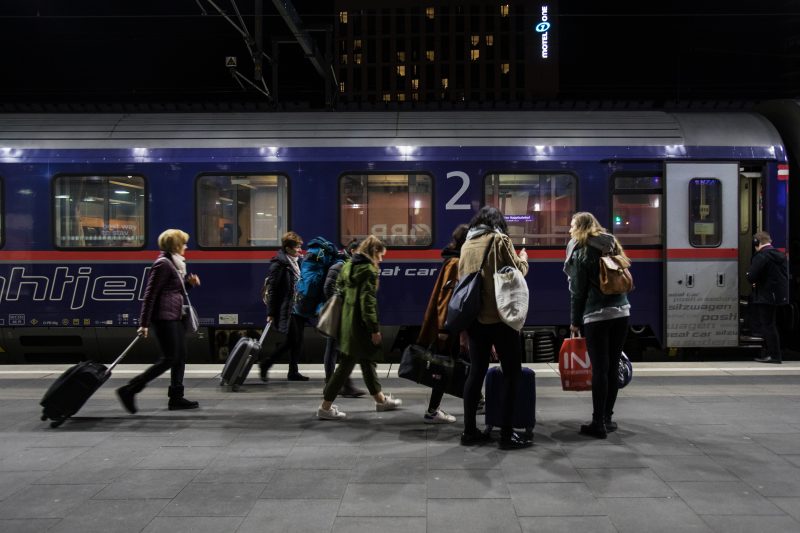Full steam ahead for Austria’s night trains
The midnight train from Vienna: Austria’s slower, overnight railway services have made it a poster child for rail enthusiasts (ALEX HALADA)
Vienna (AFP) – It looks like a scene from the halcyon days of the railways: travellers finding their sleeper berth, turning on the reading light and stowing their cases under the bed.
But it’s still a common nightly ritual at Vienna’s main station, where overnight train routes have endured in the age of low-cost flights — and are even expanding.
From early evening onwards, the departures board at Vienna’s “Hauptbahnhof” station becomes a roll call of destinations to whet the appetite of any globetrotter: Venice, Rome, Zurich, Berlin, Warsaw…
It’s an unusual sight in a continent where budget airlines and faster trains have become the norm and led to the closure of many slower overnight routes.
But Austria’s state railway company OeBB is looking to expand its network.
It already runs 26 such routes, either on its own or in partnerships with other operators.
In late 2016, OeBB bought the night train operation of its German counterpart Deutsche Bahn, which was looking to offload a department it judged insufficiently lucrative.
Around 60 percent of DB’s overnight routes were preserved, including a revamped Vienna-Berlin service which started a few months ago.
Pointing to the “moderate growth” in passenger numbers — more than 1.4 million used the services in 2018 — OeBB has ordered 13 new trains equipped with state-of-the-art sleeper carriages.
– Eco-friendly –
It’s no surprise then that Austria has become the poster child for rail enthusiasts, who say it provides an example of how overnight train travel can provide an alternative to air travel and even help in the fight against climate change.
“With regard to the target of becoming carbon-neutral by 2050, night trains which run on renewable energy are an attractive alternative,” according to Thomas Sauter-Servaes, transport expert at the Zurich University of Applied Sciences.
But as with all those who have researched the sector, he admits that cross-border overnight rail travel can represent a logistical and financial challenge.
The profits per passenger take a hit from the extra space that sleeper compartments require, on top of the higher labour costs for those who have to work on the trains overnight and money spent on laundry.
And that’s before you take into account the hefty fees sometimes charged by other network owners for use of the rails, the technical difficulty of decoupling and then re-attaching carriages, and navigating the myriad of different rules a train has to adhere to over a long journey.
Sauter-Servaes points out that international air transport has a big commercial advantage in being exempt from VAT and fuel taxes.
Among those preparing to board at Vienna station to spend a night on the rails on a recent evening, some told AFP they had chosen a night train with the environment in mind.
“It’s a small gesture, and it won’t stop me taking the plane for my holiday in Madagascar this autumn, but it’s better than nothing,” said Austrian traveller Yvonne Kemper.
David, a 42-year-old from Germany, said he was using the Hamburg service because he needed to get to Goettingen in Germany for a business trip — a medium-sized town which, typically, is served by night trains but has no airport.
– An Austrian tradition –
OeBB spokesman Bernhard Rieder explained that Austria’s attachment to night trains is down to “a tradition stemming from Austria’s mountainous terrain, which limited the development of high-speed lines”.
He added that “the night train sector is distinct in that it can’t function without strong cross-border cooperation.”
“Night trains are and will continue to be a niche market, but that doesn’t mean a niche market can’t be profitable.”
But Poul Kattler, from the pan-European “Back on Track” group which campaigns for more cross-border night trains, says the sector should be more ambitious.
“If national railway companies were more aggressive in the market and the EU built a truly common rail policy, we could offer a real transport alternative and a very popular European project,” he says.
Disclaimer: This story is published from a syndicated feed. Siliconeer does not assume any liability for the above story. Validity of the above story is for 7 Days from original date of publishing. Content copyright AFP.


